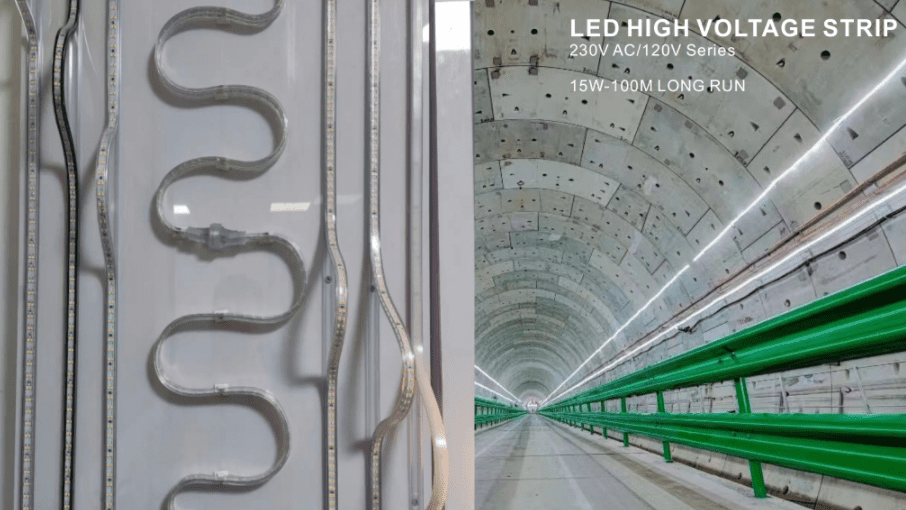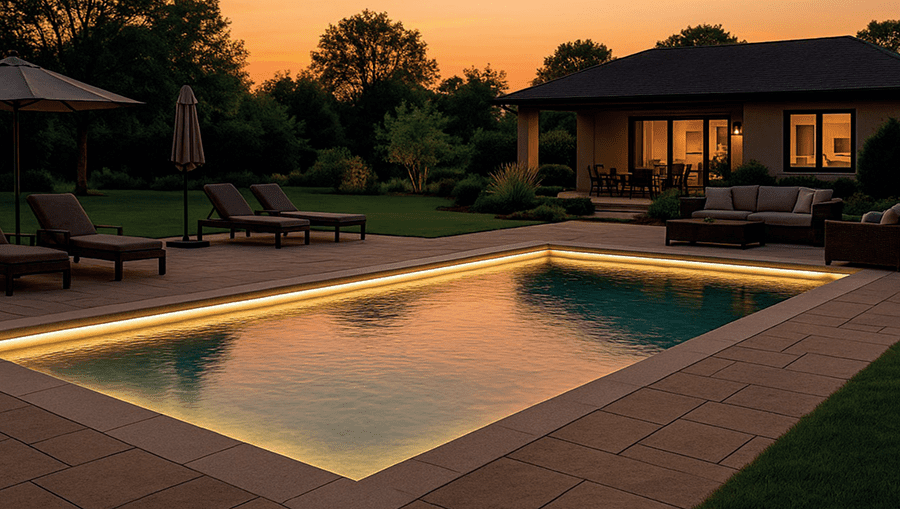Beyond Brightness: It's Not Just About Lumens Anymore
For years, the conversation around lighting was dominated by lumens (brightness) and watts (energy consumption). While these are still important, focusing on them alone is like buying a car based only on its top speed—you’re ignoring the comfort, safety, and handling.
Glare, specifically disability and discomfort glare, is the visual experience caused by excessive and uncontrolled contrast between light and dark areas in your field of view. In an office, this often comes from a bright ceiling light reflecting on your dark computer screen. This is where UGR comes in—it’s the standardized way to measure this “discomfort.” People driving usually also come across the glare and it brings high uncomfortable light directly by car headlight.

What Exactly is the Unified Glare Rating?
The Simple Analogy: Car Headlights on a Dark Road
Think about driving at night. When an oncoming car has its high beams on, the glare is blinding. That’s a high-glare situation. Now, imagine that same car with its well-adjusted, modern low-beam headlights. You can see perfectly well without the discomfort. That’s a low-glare situation.
UGR works on a similar principle. It quantifies the level of discomfort glare caused by bright lights (the luminaires) in your visual environment relative to the background illumination.
Light glaring is a common phenomenon but a very disturbing fact. So, to track this glare and have a comfortable light setup, a unified glare rating (UGR) is a crucial light matrix. It considers the brightness of the light, the dimension of the room, and other factors to give you a predicted glaring rating.
Thus, while purchasing any light, you can pre-determine whether this fixture will cause any glaring issues or not. For indoor uses, a low UGR rating is best; you will get a comforting light. But if you see high UGR values in the specification, it means the light tends to cause more glaring. But it necessarily doesn’t mean the fixture is not good enough. High UGR lights are used in applications requiring high brightness over a large area.
Therefore, you can say UGR is not a constant term or fixed property of any fixture. It in fact differs for the same bulb due to changes in viewing angle, observers’ position, size/height of the room, etc. Therefore, to get the correct UGR of a fixture, you must consider its surrounding environment and position.
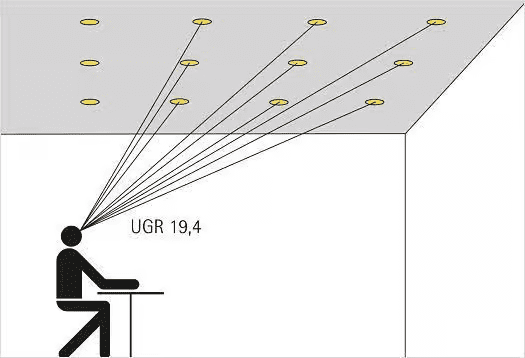
Why UGR Should Be Your Top Priority in Office Design?
Discomfort glare doesn’t relate to the visibility of an object. Instead, it refers to the irritation or discomfort as strong light rays fall into your eyes directly. Discomfort glare depends on the brightness of the light source, its location, size of the glare, etc. Besides, this also varies from person to person. For instance, you and your friend are sitting side by side. You may find the lighting on the sidewalls glaring at you. But the friend who is shorter/taller or sitting at a different angle may not find it uncomfortable. Thus, discomfort glare varies for age, eye health, and physical and mental state.

Type Of Glare
1. Direct Glare
When a light ray falls directly into your eyes, it’s called direct glare. This is caused by the high brightness of the bulb falling in the field of your vision. From the vertical surface, the angle of direct glare ranges from 45° ~ 85°.
2. Reflected Glare
Before getting to a formal definition, let me clear the concept of reflected glaring with an example. Think of a bright light reflecting on the mirror and flashing directly to your eyes. Do you find the lighting comfortable? Of course not, right? This is what a reflected glare is. This occurs when the light source is reflected back to your eyes, usually from a shiny or polished surface. This can be the wall, floor, mirror, or ceiling of your room.
3. Background Glare
When you can’t clearly see an object due to too bright background lighting is what we call background glare. For instance, you have a big window set behind the TV. The bright sunlight coming through the window causes glare issues to dominate the TV screen. Thus, you won’t enjoy watching the TV, the light from outside will continuously hit your eyes.

How to Specify Low-Glare Lighting: Which Factors Affecting UGR?
Brightness Of The Light Source
Place two lamps, one of high brightness and another of moderate level, on your study table. Which lighting do you find more comfortable while reading on your desk? As the table lamps are placed on the table and the distance between the light and the table surface is small, too bright light will surely be bothersome. The value of UGR for this bright light will be much higher than the one with low brightness. So, what you learn from this example is that the brightness of the light source has a greater effect on UGR.
Size & Height Of The Room
Suppose a light from UGR17 is installed in a big room with a high height. When you place the same fixture in a small room with a lower height, the glaring rate can change to UGR19+. Thus, with the increasing or decreasing area and height of the room, the UGR also changes.
Reflected Elements In The Room
Usually, a ceiling reflection of 70%, a wall reflection of 50%, and a floor reflection of 20% is considered the standard for a room with a dimension of 4H/8H. However, with the change of reflection percentage, the UGR values also change. The below chart will clear this up:
| Different Surfaces Of The Room | Reflectance Rate | |
| Room 1 | Room 2 | |
| Ceiling | 70% | 30% |
| Wall | 50% | 30% |
| Floor | 20% | 30% |
| UGR | 17.9 | 19.4 |
Angle Of View
If the light source is installed directly above or at a sharp angle from you, it will cause glaring issues. Here, the light falls at your eyes at direct angles; so the UGR will be high. However, by changing your position, you can minimize the light angle of the incident and thus reduce the UGR.
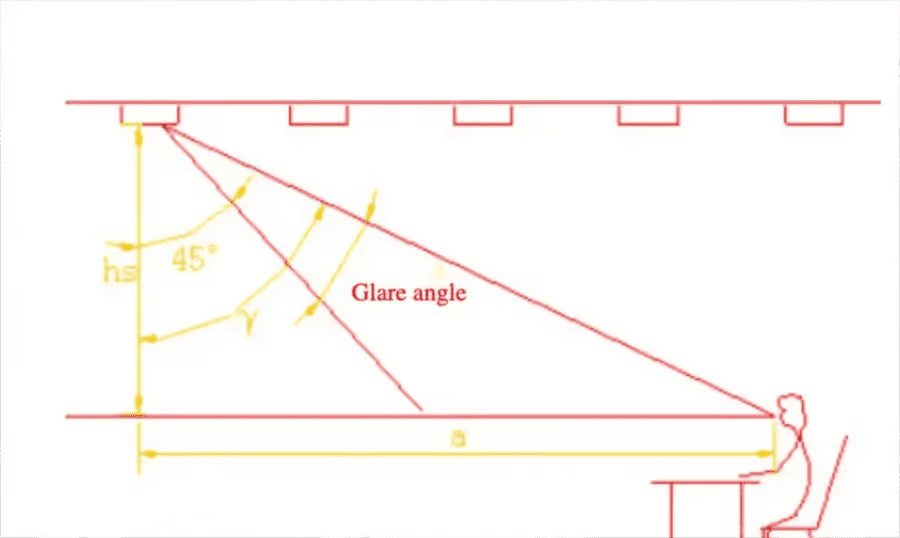
Eye Condition Or Visual Acuity
If you have myopia, that is, you can’t see distant objects clearly, and you tend to face more glaring issues. The same will happen if you have dry eye syndrome or photophobia. Besides, with aging, the adaptation capacity of the yee also reduces. So, the same light setting may not appear discomfortable to you, but an old man might find it too bright. That is, though the value of UGR remains constant, its perception varies from person to person.
Luminaire Base UGR Calculation
This method is popularly known as tabular method. It is a well-recognized method standardized by CIE.
In the luminaire base UGR calculation, you will get 190 different UGR values for different room sizes and reflection combinations.
The room dimension is considered as the multiple of the height (H) of the room.
For instance, a room of 4H/8H dimension means if the height of a room, ‘H,’ is 2.5m, its length is 4H = (4 x 2.5) = 10m, and width = 8H = (8 x 2.5) = 20m.
In the tabular method, the room dimension is limited between 2H to 12H.
The calculation here is done from the viewpoint of a single observer placed at the center of the wall 1.2m above the floor. However, the observer must consider the view from two angles- crosswise and endwise.
This way is fast way for us to select suitable led fixtures by their ies/LDT test files during project lighting plan.
The UGR table data includes different factors to find out the glare rating of a fixture.
To read the test report, here are some terms you must be familiar with:

The UGR table data features three reflective aspects of the room in percentage; these are:
- Ceiling/ cavity: Amount of light reflected by the ceiling of the room. This usually ranges from 30% (0.3) to 70% (0.7). For light or white ceilings, the percentage is higher, and for dark ceilings, the reflection is lower.
- Wall: Amount of light reflected from the vertical surface or walls of the room. The light reflected percentage for walls mostly ranges from 30% (0.3) to 50% (0.5).
- Working plane or floor: Amount of light reflected from the working surface or the floor. This is the horizontal surface for considering the reflection of light. To calculate the UGR value from the position of the observer, you must consider this plane.
Room Dimension
The dimensions of the room are usually referred to as x, y, and H.
Here,
- x = Length of the room
- y = Width of the room
- H = Height of the room
In measuring UGR, the length and width of the room are determined as multiple of height, H. For instance, if you find in the report x = 4H and y = 2H, it means the length of the room is four times its height, and the width is two times the height.
Viewing Perspective or Angle
In the UGR report, the glaring is measured from two viewing angles or perspectives; these are as follows:
a. Crosswise View
The UGR ratings under this section mean that the observer got the view from the side of the room. That is, the fixture is installed along the length of the ceiling, and the observer gets the view from a sidewise direction.
b. Endwise view
The UGR rating under the endwise view is measured by placing the observer at the end of the fixture. That is, the observer was looking at the length of the light.

Likewise, by taking the crosswise and endwise view for different room dimensions, a total of 190 UGR ratings are listed on the test report.
Guide To Choose The Right UGR Rating For Different Applications
Low UGR is crucial for fine tasks or activities that require the highest level of concentration. For example- in an operation theatre, a high UGR light can lead to a severe accident. So, for such an application, a UGR of 10 to 13 is applicable, which you can barely perceive.
Again, for retail and commercial stores, a UGR ≤ 19 is good. However, you must also consider the size of the space. For example, in large shopping malls that require high-lumen bulbs, considering a UGR ≤ 22 is acceptable.
In the below chart, I have added some UGR for various applications:
| Application | Recommended UGR |
| Operating room | 10 |
| Drawing room, boardroom, meeting room & classroom | 16 |
| Office & Commercial | 19 |
| Bakeries, kitchen, & cinema | 22 |
| Industrial work (fine) | 22 |
| Industrial work (heavy) | 25 |
| Circular areas, warehouses, foyers, & corridors | 28 |
However, following these isn’t enough. To get accurate results, you must calculate the UGR by using the above methods, as I discussed above. Also, the lumen rating of the fixture, the height of the installation, and the size of the space matter.
Don't Let Glare Undermine Your Workspace
What is a UGR<19 Light Fitting?
UGR<19 is an important basic standard when we talk about UGR.
UGR< 19 light fitting means a light fixture that produces a UGR less than 19. However, it is applicable only for a fixed dimension of the room and percentage of reflectance values.
This is because UGR< 19 is not a property of the light; under different environmental conditions and positions, the value will vary.
The standard measurement of a UGR<19 light fitting is considered for the specific specifications:
Dimension of the room = 4H/8H (‘H’ stands for height)
Degree of reflectance = Floor 20%, wall 50%, and ceiling 70%
However, in real cases, all rooms will not have such dimensions and reflections. That is why, to consider the glaring rating, you need to calculate it for specific applications.
thus when designing the light, you should purchase low UGR lighting for glare-free illumination. For this, you must consider the application to get the ideal UGR-rated luminaire. For instance, if you are designing lighting for an office room, a UGR<19 is ok. But if it’s an operation room or place where tasks need to be done with full concentration, go with UGR 10 to 16.
Besides, check the UGR table to match the rating for a specific size of the room to get the accurate glaring effect. This will help you to position the light to get optimal illumination. Again, you must consider the reflective surfaces of the room while using light design. This can greatly impact the UGR value. For instance, the UGR for a bulb installed in a 4H x 2H room is 17.8, but due to an increase in reflection, this can reach 19+. So, you should do an application-based UGR calculation for real-time UGR value.
However, besides UGR, you should also get the right CRI and CCT of the LED to get a finished light setup. Here below table is reference for UGR limit in different applications or rooms.
BS EN12464 Light and lighting has covered UGR for more than 280 installation cases. This includes all types of applications, such as schools, offices, hospitals, industrial areas, and more. Here, you will find UGR suggestions for both indoor and outdoor settings.
Below, I have summarized the maxim UGR suggested by BSEN12464 for interior areas, tasks, and activities:
| UGR limits for interior areas, tasks, and activities | ||
| BSEN12464 table | Type of area, task, or activity (no. of sub-divisions) | Maximum UGR |
| 5.1 | Traffic zones inside buildings (4) | 25-28 |
| 5.2 | Rest, sanitation & first aid rooms (6) | 16-25 |
| 5.3 | Control rooms (2) | 19-25 |
| 5.4 | Store rooms & cold stores (2) | 25 |
| 5.5 | Storage rack areas (4) | 22 |
| 5.6 | Industrial activities & crafts – Agriculture (4) | 25 |
| 5.7 | Industrial activities & crafts – bakeries (2) | 22 |
| 5.8 | Industrial activities & crafts – Cement, cement goods (4) | 25-28 |
| 5.9 | Industrial activities & crafts – Ceramics, tiles, etc. (7) | 16-28 |
| 5.10 | Industrial activities & crafts – Chemical, plasti,c etc. (8) | 16-28 |
| 5.11 | Industrial activities & crafts – Electrical & electronics (6) | 16-25 |
| 5.12 | Industrial activities & crafts – Foodstuffs, luxury food (8) | 16-25 |
| 5.13 | Industrial activities & crafts – Foundries & casting (11) | 22-25 |
| 5.14 | Industrial activities & crafts – Hairdressers (1) | 19 |
| 5.15 | Industrial activities & crafts – Jewellery mfg. (4) | 16-19 |
| 5.16 | Industrial activities & crafts – Laundries, dry cleaning (4) | 19-25 |
| 5.17 | Industrial activities & crafts – Leather, leather goods (9) | 16-25 |
| 5.18 | Industrial activities & crafts – Metalworking (14) | 19-25 |
| 5.19 | Industrial activities & crafts – Paper (3) | 22-25 |
| 5.20 | Industrial activities & crafts – Power stations (5) | 16-28 |
| 5.21 | Printers (5) | 16-19 |
| 5.22 | Industrial activities & crafts – Rolling mills, iron, steel (9) | 22-28 |
| 5.23 | Industrial activities & crafts – Textiles (13) | 19-28 |
| 5.24 | Industrial activities & crafts – Vehicles (6) | 19-22 |
| 5.25 | Industrial activities & crafts – Wood (9) | 19-28 |
| 5.26 | Offices (7) | 16-25 |
| 5.27 | Retail premises (3) | 19-22 |
| 5.28 | Places of public assembly, general areas (4) | 22-15 |
| 5.29 | Places of public assembly – Restaurants & hotels (7) | 19-25 |
| 5.30 | Places of public assembly – Theatres, cinemas, etc. (4) | 22 |
| 5.31 | Places of public assembly – Trade fairs & exhibitions (1) | 22 |
| 5.32 | Places of public assembly – Museums (2) | n/a |
| 5.33 | Places of public assembly – Libraries (3) | 19 |
| 5.34 | Places of public assembly – Public car parks indoors (5) | 19-25 |
| 5.35 | Educational premises – Nursery school, play school (3) | 19-22 |
| 5.36 | Educational premises – Educational buildings (26) | 16-25 |
| 5.37 | Health care premises – Rooms for general use (8) | 22 |
| 5.38 | Health care premises – Staff rooms (2) | 19 |
| 5.39 | Health care premises – Wards, maternity wards (6) | 19-22 |
| 5.40 | Health care premises – Examination rooms (general) (2) | 19 |
| 5.41 | Health care premises – Eye examination rooms (2) | 19 |
| 5.42 | Health care premises – Ear examination rooms (2) | 19 |
| 5.43 | Health care premises – Scanner rooms (2) | 19 |
| 5.44 | Health care premises – Delivery rooms (2) | 19 |
| 5.45 | Health care premises – Treatment rooms (general) (6 | 19 |
| 5.46 | Health care premises – Operating areas (3) | 19 |
| 5.47 | Health care premises – Intensive care unit (4) | 19 |
| 5.48 | Health care premises – Dentists (4) | 19 |
| 5.49 | Health care premises – Laboratories & pharmacies (2) | 19 |
| 5.50 | Health care premises – Decontamination rooms (2) | 22 |
| 5.51 | Health care premises – Autopsy rooms & mortuaries (2) | 19 |
| 5.52 | Transportation areas – Airports (11) | 16-25 |
| 5.53 | Transportation areas – Railway installations (11) | 19-28 |
Note: The UGR recommended by BSEN12464 is not mandatory to follow; it’s just a suggestion. For optimal light performance, design your lighting and pick UGR based on real-time application needs.
How To effectively Reduce the UGR of an Installation?
Generally, there are fives solutions usually adopted,
Use Optical solutions: In most cases, you will find high brightness is the cause of high UGR. To solve this, we ususally use diffusers Opal diffuser or Microprismatic ,for examples led linear light , lens +honeycomb ,Cross anti-glare ring , louvre etc These will distribute the light evenly without concentrating it in a definite direction. Thus, the UGR will be reduced to a greater extent.


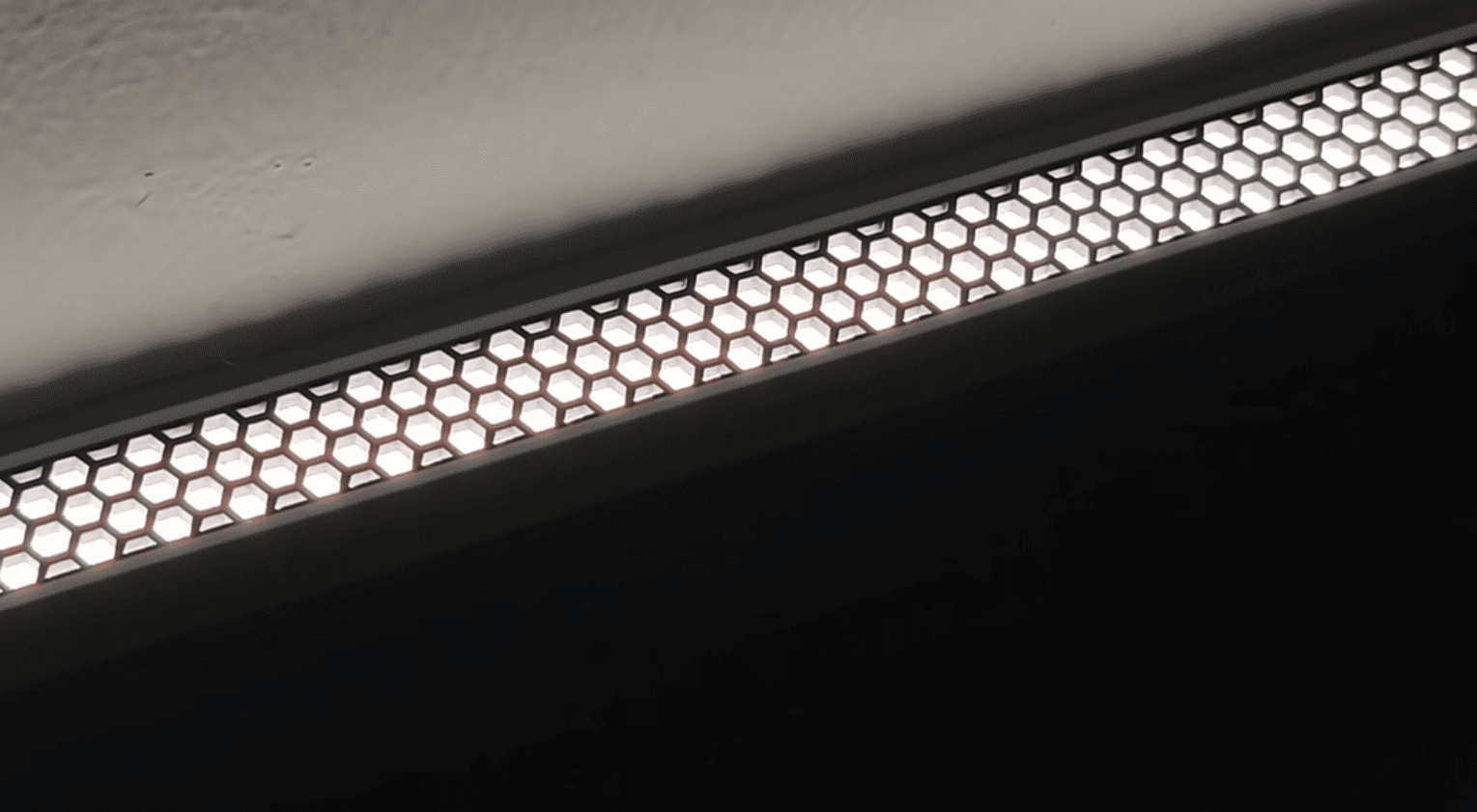
Flexible Honeycomb
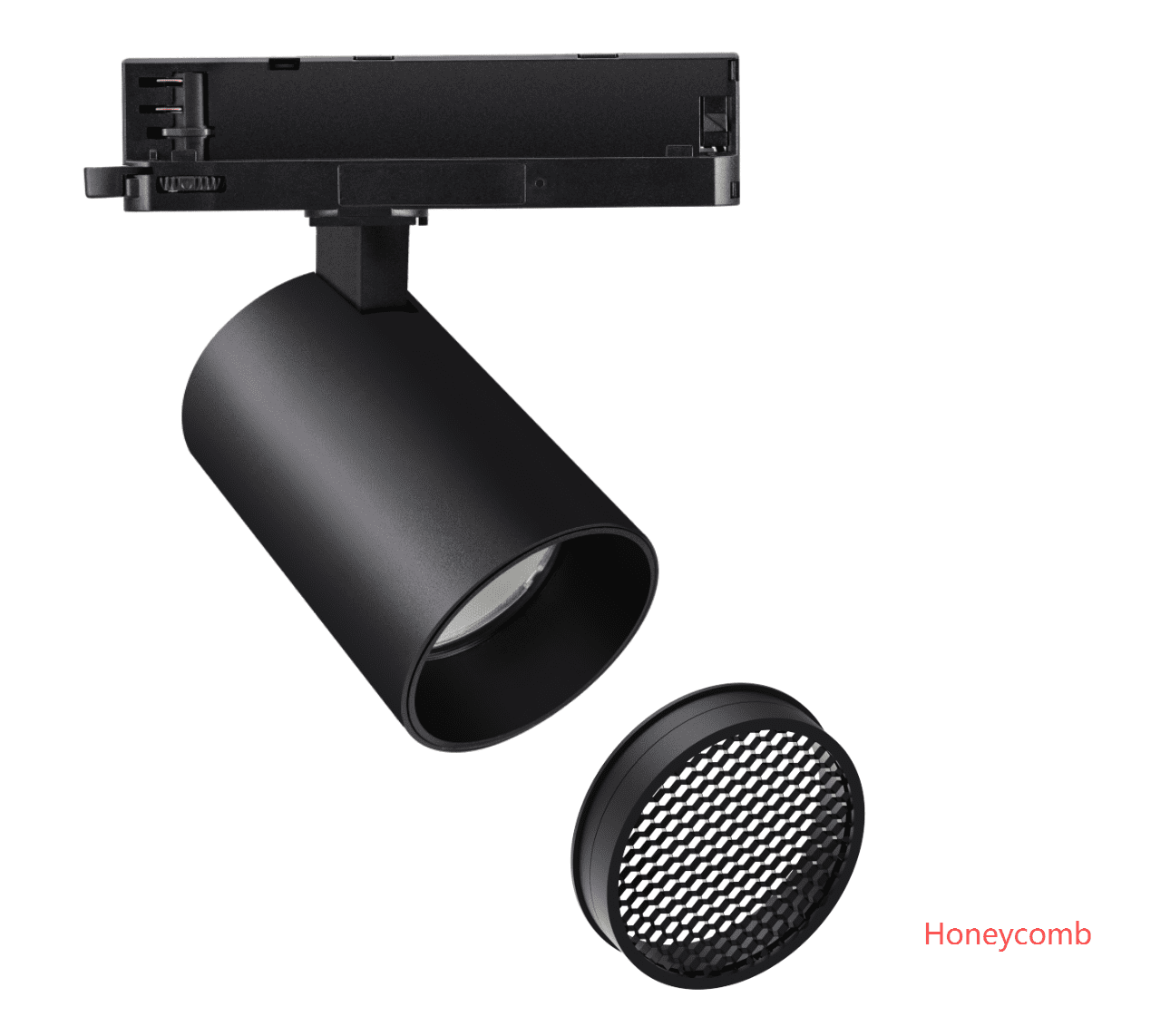
Install decorative materials on the glossy surface: The reflection of lights from glossy surfaces causes direct glaring. So, place decorative items on the reflecting surface to create a barrier. This will minimize reflective glaring tendencies. For example, placing a curtain on the mirrors will lower glare.
Adjust the placement of the luminaries: having adjustable lights, for instance, a track light? If yes, controlling UGR is in your hands! Change the direction and angle of the light and see if you still feel the same glaring as you felt before. This way by adjusting the light location, you can minimize the UGR for a definite direction or viewing angle.
Combining natural lighting with artificial light sources: when the light falls from a single light source, the intensity from that particular direction is high. This ends up causing high UGR. What you can do is to add multiple lights. This will divert your concentration from a single source and give you an even light output from multiple fixtures. Let me share another tip- instead of using one high-lumen bulb, always go for multiple medium-range lumen lights. This will provide you with a far more comfortable light setting.

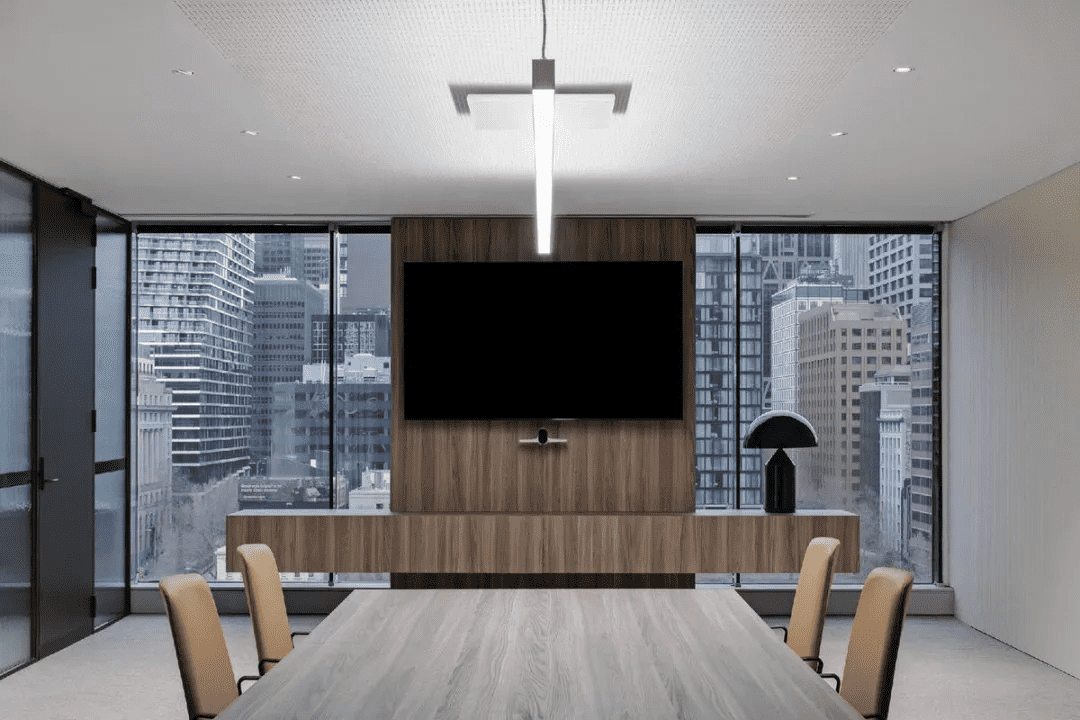
Indirect&direct light
Use light controllers: Want to get greater control over your lights, UGR? Install lights with a controller. Mostly popular dimmable control ,like DALI ,triac ,or 1-10V DC ,or lumimaire built with sensor to adjustable the brightness with harvesting funtion .This allows you to adjust the brightness and CCT as per your comfort preference. So, if you find the light too glaring from any position, simply reduce its brightness. This will reduce the UGR to some extent.

If you are looking for low UGR led luminaires or hope to get right UGR constrol solution for next project ,welcome to contact us ,so we can provide suitable suggestions and right led lights.


